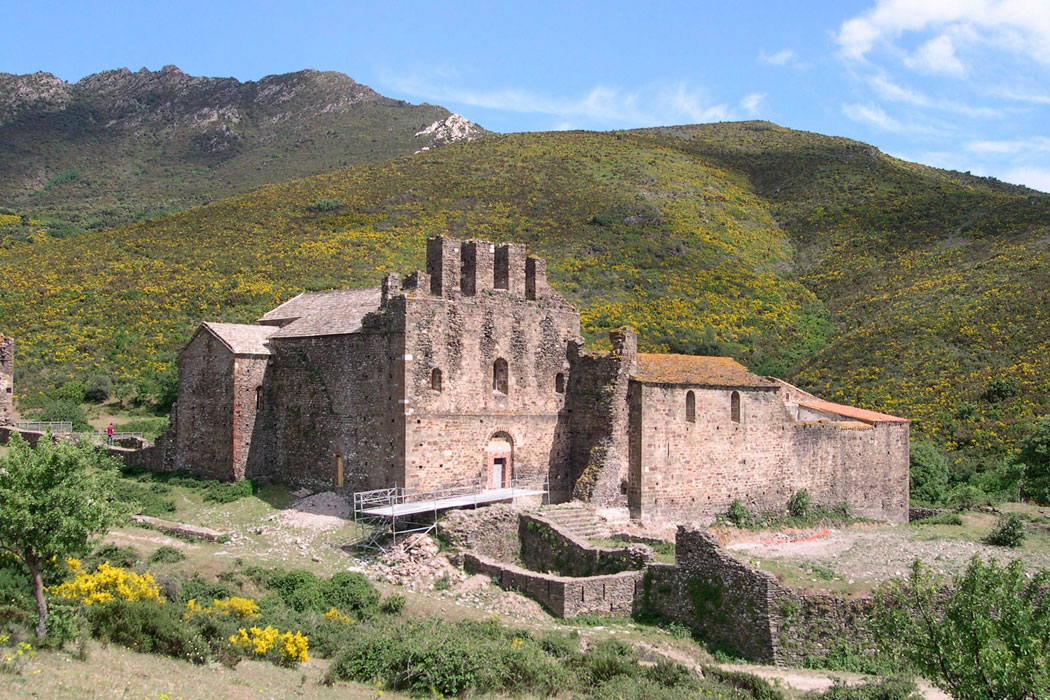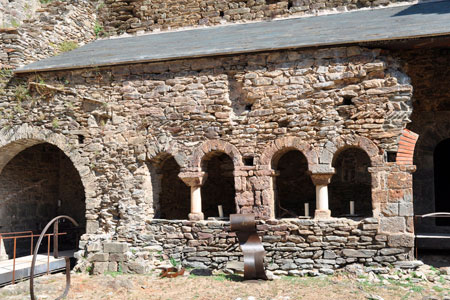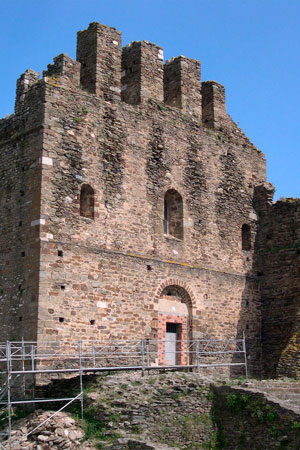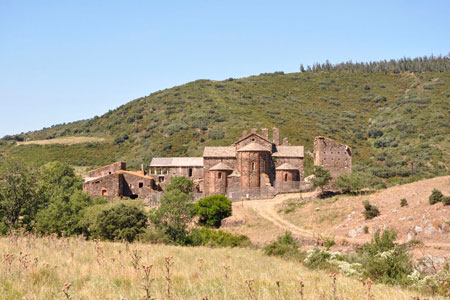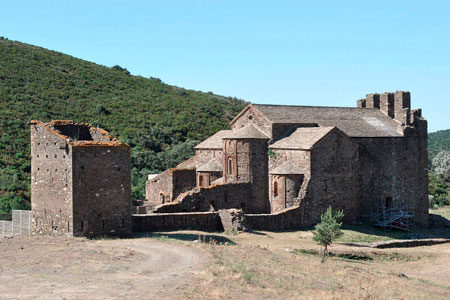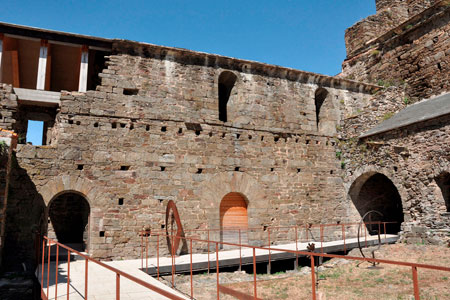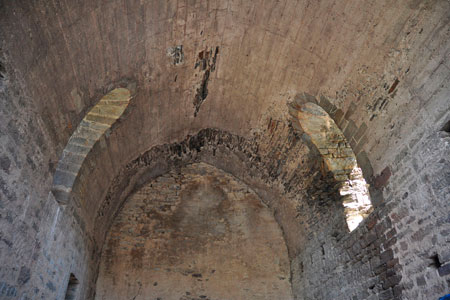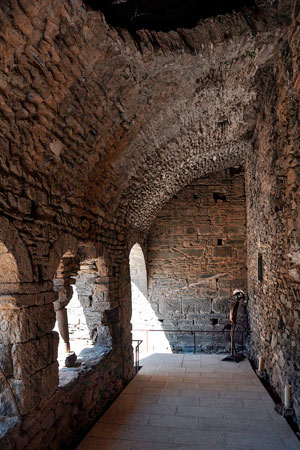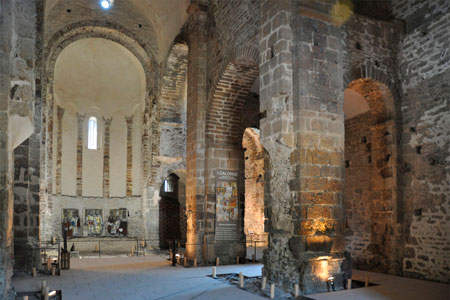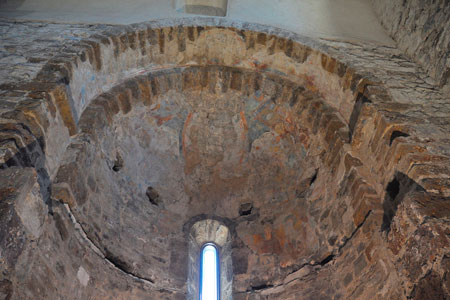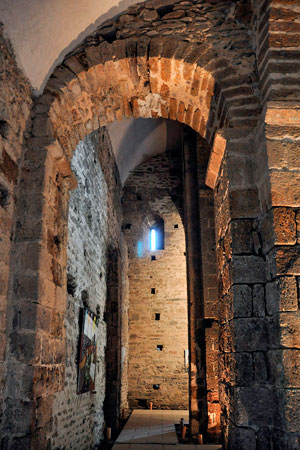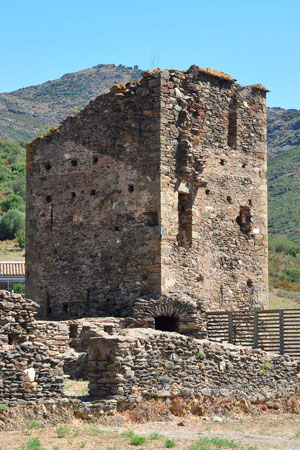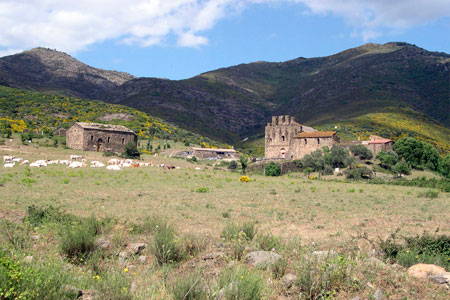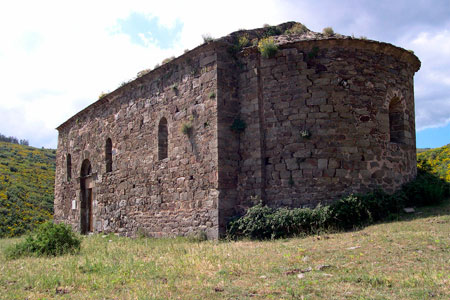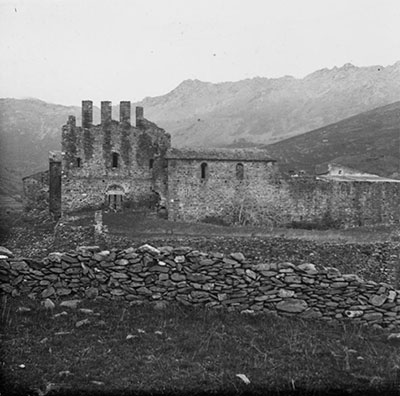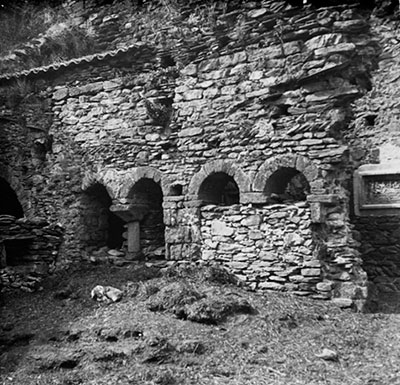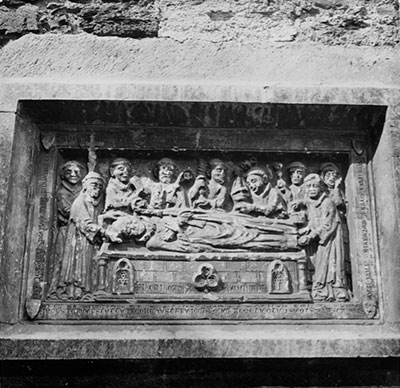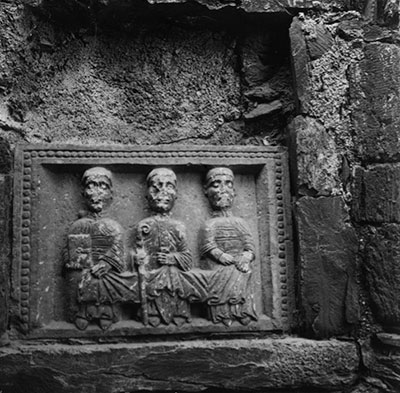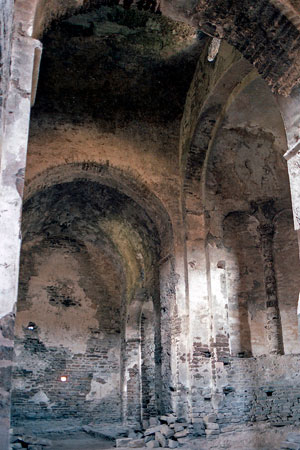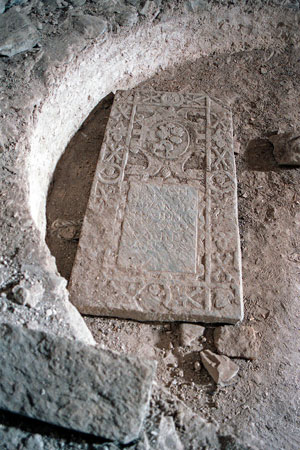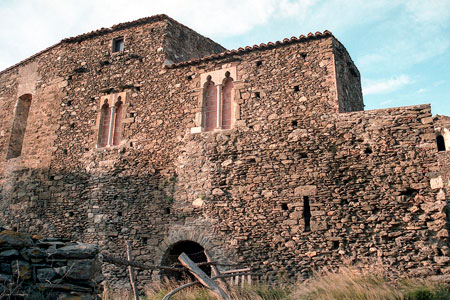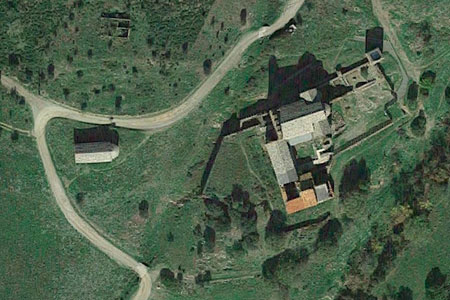Monastery of Sant Quirze de Colera
Sant Quirc / Sancto Quirico / Collaria / S Cirici
(Rabós, Alt Empordà)
The origins of the monastery of Sant Quirze de Colera are unclear. According to a document considered to be false (although not in its entirety), it is possible that around the year 785 several members of the same family, led by the brothers Libuci and Assinari, settled here.
The promoters of the initiative would have taken the lead in founding a monastery on this site with an authorisation granted by Charlemagne. Before the year 815, they obtained a royal decree which already mentioned the monastery and made it the beneficiary of various goods. Despite the unreliability of this information, important architectural elements and tombs from that period have been discovered that prove, at least, its antiquity. That precept of Charlemagne would have been the starting point for a series of donations and foundations of parishes under the direction of the monastery of Sant Quirze. Later, the monastery, which was a private foundation owned by the family of the founders, received from them the ownership of the property. After an attempt of interference by Count Alaric of Empúries, the abbot of Sant Quirze asked Louis the Pious in 844 to recognise the foundation and the rights acquired.
After a period without news, possibly due to some war incursions, the monastery is already mentioned in a reliable way in 927, in a document where the name of its abbot, Manuel, appears, which marks the beginning of a period of growth. In 935, the bishop of Girona inaugurated the monastic church, built thanks to the financial support of Count Gausbert of Empúries, who benefited Sant Quirze with more properties and rights. In the following years, Colera played a decisive role in various acts related to other monastic centres in the surrounding area. In 1123, Bishop Berenguer of Girona presided over the consecration ceremony of the new church, and at that time the church of Santa Maria was also mentioned. In the following years, important donations continued to be recorded in its favour.
In 1285 and again in 1288, it suffered the effects of the passage of French troops because of the conflicts between the armies of Philip III the Bold and the Crown of Aragon. In the 15th century, signs of decadence and the existence of commendatory abbots began to appear. There is evidence that in 1441 the cloister was in danger of ruin. In 1592, the monastery was suppressed, and the community was extinguished and integrated with that of Sant Pere de Besalú. With the suppression of 1835, the assets of the latter monastery were auctioned off and Sant Quirze de Colera passed into the hands of the military and politician Ramon de Nouvilas. The buildings were used for agricultural purposes and were sometimes abandoned. In 1931 it was declared a National Monument and in recent times excavation, consolidation and restoration work has been carried out.
The most important building in the complex is the church, with three naves and a transept with three apses. There are remains of the cloister, fortified elements, and outbuildings surrounding the cloister and the abbot's palace. To the west of the complex is the small Romanesque parish church of Santa Maria.
- AGUSTÍ, Bibiana i altres (1998). Sant Quirze de Colera entre els segles XII i XIV. D'edifici religiós a fortificació militar. Annals de l’Institut d’Estudis Empordanesos, vol. 31
- BADIA I HOMS, Joan (1981). L’arquitectura medieval de l’Empordà. Vol. II-B. Girona: Diputació de Girona
- BADIA I HOMS, Joan (1990). Catalunya romànica. Vol. IX. L’Empordà II. Barcelona: Enciclopèdia Catalana
- CODINA REINA, Dolors (2012). Sant Quirze de Colera. Un jaciment arqueològic excepcional. Annals de l’Institut d’Estudis Empordanesos, vol. 43
- COSTA BADIA, Xavier (2019). Paisatges monàstics. El monacat alt-medieval als comtats catalans (segles IX-X). Tesi doctoral. Universitat de Barcelona
- DEULOFEU, Alexandre (1962). El monestir de Sant Quirze de Colera. Annals de l’Institut d’Estudis Empordanesos, vol. 3
- GAVÍN, Josep M. (1983). Inventari d’esglésies. Vol. 13, Alt Empordà. Barcelona: Arxiu Gavín
- PUJADES, Geroni (1829). Crónica universal del principado de Cataluña. Vol. V. Barcelona: Torner
